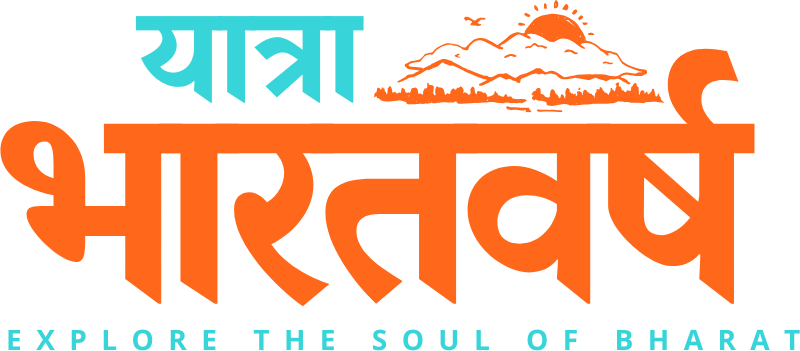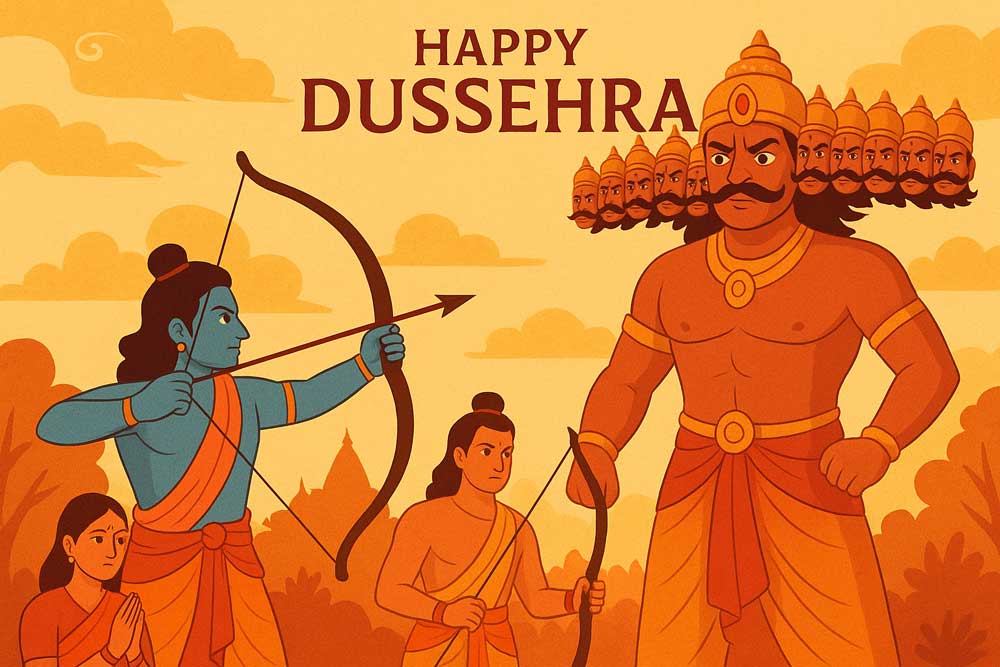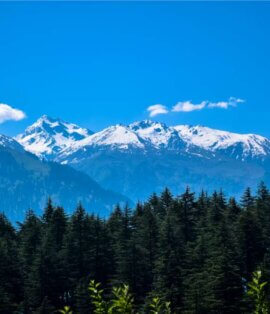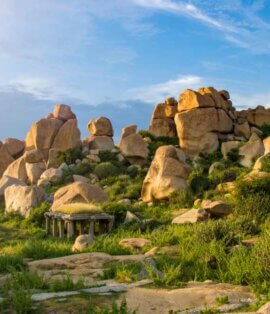Dussehra, known as Vijayadashami in many parts of India, is not just a festival but an essential cultural milestone that marks the victory of good over evil. Rooted in ancient mythology, this festival resonates deeply with people across the country, inspiring them to conquer personal struggles, seek spiritual growth, and unite in celebration. While the core theme of Dussehra remains consistent—the triumph of virtue over vice—the ways it is celebrated, the significance it holds, and the stories surrounding it differ across India, adding layers of cultural richness to the occasion.
This article explores how Dussehra is celebrated across India, the profound meanings behind its rituals, and how it connects with modern-day themes, as well as practical ways to make the most out of your Dussehra experience in 2025, which will be observed on October 2nd. Whether you are looking to understand the more profound symbolism or searching for ways to celebrate Dussehra at home, this guide has something for everyone. The Dashami Tithi begins on October 1st at 7:01 PM and ends on October 2nd at 7:10 PM, with the Vijay Muhurat being the most auspicious time for puja from 2:09 PM to 2:56 PM on October 2nd.
What is Dussehra, and why is it celebrated?
Dussehra, also known as the Dasara festival, falls on the 10th day of the Ashvin month in the Hindu calendar, typically in late September or October. The festival commemorates Lord Rama’s victory over the demon king Ravana, symbolizing the triumph of righteousness (dharma) over evil (adharma). This victory was a result of Lord Rama’s deep devotion to duty, his moral integrity, and his ongoing search for truth, making the event not just a historical battle but a lesson in living with honor.
Dussehra also marks the victory of Goddess Durga over the demon Mahishasura, who symbolized the destruction of peace. The festival is observed for different reasons in different regions of India, but the universal theme is the victory of good over evil, light over darkness, and knowledge over ignorance.
The festival’s impact extends far beyond the religious sphere. It also has political, social, and psychological connotations, as it reminds us to stay true to our values and persevere through the inevitable challenges of life. Dussehra is now a time for self-reflection and recommitment to one’s morals, in addition to rituals and prayers.
Celebrating Dussehra at Home: Embrace Tradition with a Modern Twist
Celebrating Dussehra at home allows you to immerse yourself in the festival’s rich spiritual significance while adding your touch. Here are unique ways to celebrate Dussehra in the comfort of your own space, combining tradition with modern-day practices:
1. Organize a Virtual Ramlila
While the grand Ramlila performances are a key part of Dussehra in many cities, you can organize a virtual Ramlila at home with family and friends. Many online platforms now host live-streamed Ramlila performances that you can view, or you can even create a DIY Ramlila with your children, dressing up as characters from the epic and narrating key events.
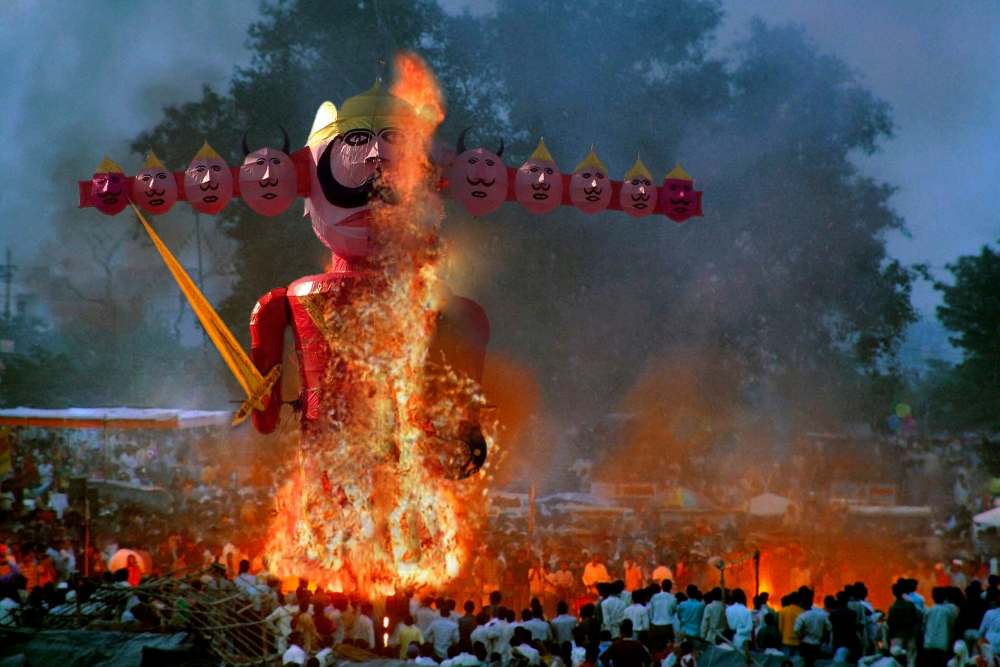
2. Sculpt a Symbolic Ravana Effigy with Eco-friendly materials.
The tradition of burning the effigy of Ravana is widely popular during Dussehra. However, instead of using non-biodegradable materials, try sculpting a small effigy of Ravana using eco-friendly materials like clay, papier-mâché, or natural fibers. After performing the symbolic ritual, you can recycle the materials, turning the tradition into a sustainable practice.
3. Perform a ‘Victory of Knowledge’ ritual.
While many households conduct pujas for Lord Rama or Goddess Durga, you can also set up a dedicated space for prayer and worship of knowledge by keeping books, study materials, or electronic devices on display. A unique and contemporary ritual could involve lighting a diya (lamp) in front of books to symbolize the triumph of knowledge over ignorance, a theme integral to both Dussehra and Diwali.
4. Host a Traditional Feast with a Fusion Twist
No celebration is complete without food. While traditional dishes such as puri, kachaudi, and jalebi are often served during Dussehra, you can experiment by blending regional recipes from different parts of India. Imagine a fusion meal where you serve traditional Dussehra dishes alongside popular modern options like quinoa and millet-based meals, symbolizing the blending of cultures over time.
Dussehra Rituals: Understanding Their Significance
The rituals followed on Dussehra vary depending on regional customs, but the core message remains unchanged. Below are some everyday rituals that you can incorporate into your celebration:
1. Navratri – The Nine Days of Worship
Dussehra is preceded by Navratri, a nine-night festival dedicated to Goddess Durga. Each night of Navratri is a tribute to one of the nine forms of Durga, and it is a time for devotees to offer prayers, perform pujas, and engage in fasting. The festival is considered a period of purification and introspection, where participants strive to overcome their inner demons and temptations.
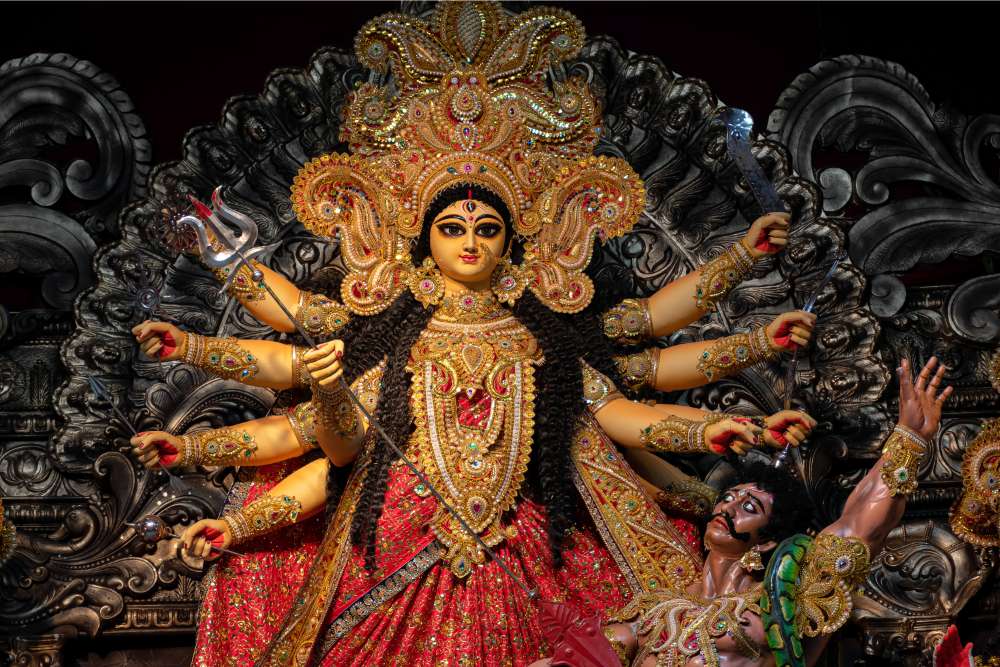
2. Durga Puja and Ritualistic Offerings
In some regions of India, Dussehra is part of the Durga Puja celebrations, especially in Bengal and Odisha. Devotees offer flowers, fruits, and sweets to the Goddess. The final day of Durga Puja, which coincides with Dussehra, sees grand processions and the immersion of Durga idols in rivers, symbolizing the departure of the Goddess after granting her blessings.
3. Vijayadashami and Weapon Worship
In parts of North India, especially in military families and communities, Vijayadashami is associated with the worship of weapons. People clean and worship their tools of trade—whether they be machinery, vehicles, or instruments—seeking divine blessings for success in their respective fields.
4. The Burning of Ravana’s Effigy
The symbolic burning of Ravana’s effigy signifies the destruction of evil. This ritual serves as a reminder to burn the negativity in one’s life, whether it’s bad habits, toxic relationships, or personal limitations. Today, this ritual is also interpreted as a call to eliminate modern-day “ravanas”—such as greed, corruption, and hatred—from society.
How Dussehra is Celebrated Across India
1. North India: Ramlila and Grand Processions
In cities like Delhi, Varanasi, and Jaipur, Dussehra is celebrated with grand Ramlila performances that enact the epic battle between Lord Rama and Ravana. The burning of effigies of Ravana, Kumbhakarna, and Meghnada often follows these performances, offering a visual spectacle for the masses. People dressed in traditional attire fill the streets, while fireworks and lights illuminate the night.
2. South India: Durga Puja and Kolu
In Tamil Nadu, Karnataka, and Andhra Pradesh, Dussehra is closely linked with Durga Puja. Families erect elaborate displays known as Kolu, arranging dolls depicting various deities, mythological stories, and social scenes in steps. Communities come together to celebrate with traditional dance forms, music, and sumptuous feasts.
3. West India: The Energy of Garba
In Gujarat and Maharashtra, Dussehra coincides with Navratri and is celebrated with much vigor through the energetic Garba dance. People gather in large circles and perform this traditional folk dance around an illuminated Garba idol, singing devotional songs and celebrating the divine energy of the Goddess.
4. East India: Durga Puja
In West Bengal, Odisha, and Bihar, Dussehra is synonymous with Durga Puja. The worship of Goddess Durga centers this grand celebration, with intricately decorated pandals (temporary temples) and processions featuring vibrant idols of Durga. On the final day, devotees immerse the idols in water, marking the Goddess’s return to her heavenly abode.
Kullu Dussehra: A Unique Celebration in Himachal Pradesh
Kullu Dussehra, celebrated in the town of Kullu in Himachal Pradesh, is renowned for its cultural vibrancy and grandeur. Kullu Dussehra has a deeper spiritual focus, unlike traditional Dussehra celebrations that burn Ravana’s effigy. The festival begins with a Rath Yatra (chariot procession) of Lord Raghunath, the region’s presiding deity. People bring over 200 local deities from nearby villages to Kullu, marking the festival with vibrant processions, traditional dances, folk music, and community rituals.
The Kullu Dussehra procession features beautifully adorned chariots pulled through the streets, accompanied by drums, trumpets, and cymbals, creating a festive atmosphere. The key ritual involves offering prayers to Lord Raghunath, with devotees presenting flowers, fruits, and sweets.
Why Visit Kullu for Dussehra?
In 2025, if you’re looking to experience a novel combination of spirituality and culture, Kullu Dussehra is a must-visit. The festival’s grand processions, set against the stunning backdrop of the Himalayan mountains, make it an unforgettable celebration of Himachal Pradesh’s rich traditions. Whether you seek to immerse yourself in its rituals or enjoy the festive atmosphere, Kullu Dussehra offers a once-in-a-lifetime experience.
Dussehra 2025: When is it, and What to Expect?
In 2025, Dussehra will be observed on October 2nd. This year’s celebration will be particularly significant, as it coincides with the festive season, with Diwali just around the corner. The festival will bring together millions of people across India for grand processions, communal prayers, and cultural performances. Whether you’re attending a local Dussehra Mela near me or celebrating in the comfort of your home, this year promises a vibrant celebration of hope, strength, and unity.
Dussehra Wishes and Status Updates
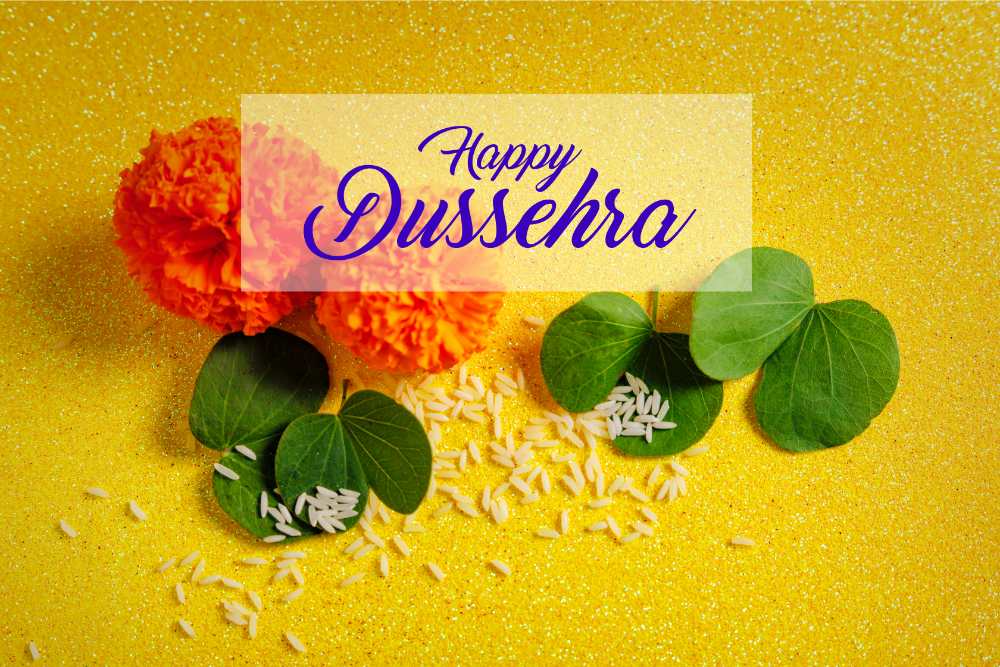
On social media, sharing Dussehra wishes and statuses is a tradition that unites people in joy and celebration. Here are some unique ways to share images of Dussehra wishes:
- “May the light of victory shine on you, this Dussehra! Let your inner strength rise above every obstacle.”
- “Dussehra is a time to burn the negativity within and rise from the ashes of despair. Wishing you a victorious and prosperous year ahead!”
- “Let this Dussehra mark the beginning of new victories and accomplishments in your life. Happy Vijayadashami!”
Conclusion: A Festival of Reflection, Renewal, and Joy
Dussehra is more than just a celebration; it’s a spiritual journey that beckons individuals to confront their inner demons, strengthen their resolve, and embrace the light of good. Whether through rituals, celebrations, or personal reflections, Dussehra offers something profound for everyone. This year, as we celebrate the victory of good over evil, may we find the courage to overcome our challenges, rise above our struggles, and spread positivity in all our endeavors.
